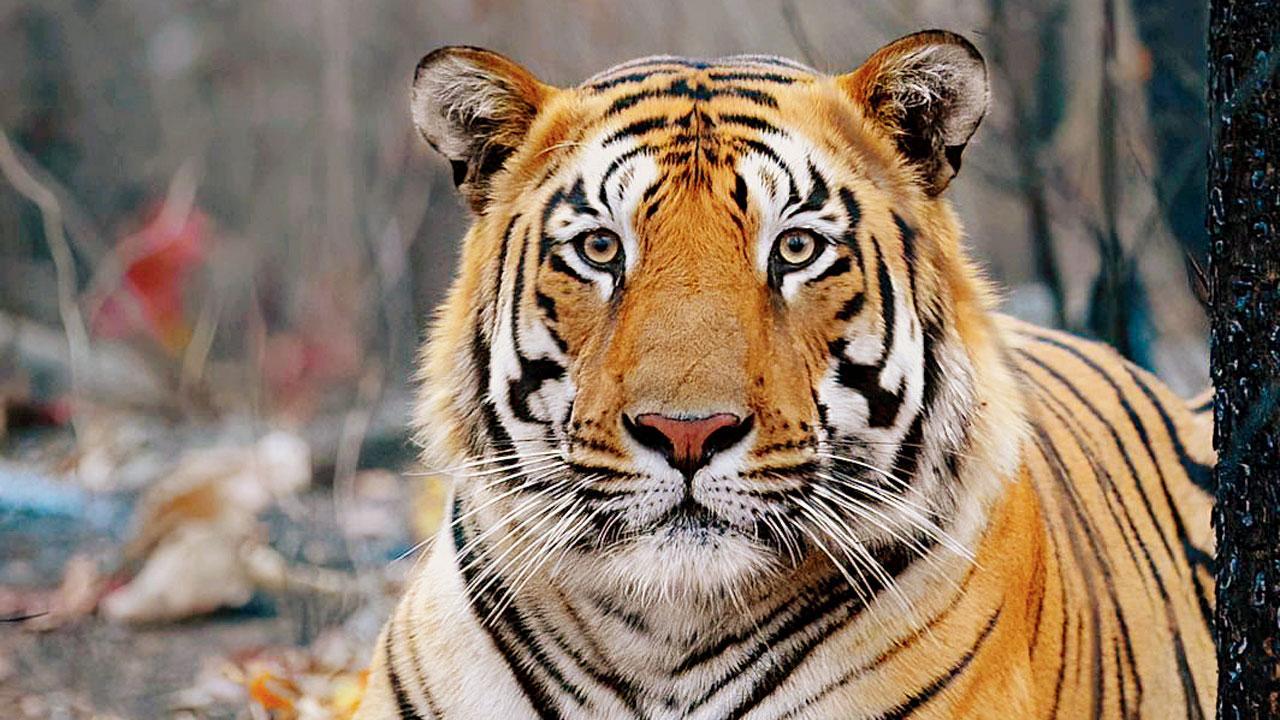The highest tiger deaths in India in three years have been recorded in 2023 at 145, despite annual growth rate of 6.1 per cent per annum in their population

A tiger at Satpura Tiger Reserve. Madhya Pradesh, where it is situated, saw the highest, 34 tiger fatalities. Pic/Sarosh Lodhi
The year 2023 appears to be challenging for tigers. According to data from the National Tiger Conservation Authority (NTCA), there have been 145 tiger deaths in the first nine months of this year, the highest number in the past three years. In 2022, there were 116 tiger deaths, 127 in 2021, and 106 in 2020. Madhya Pradesh recorded the highest tiger deaths followed by Maharashtra and Uttarakhand. India is home to nearly 75% of the global wild tiger population.
According to data from the NTCA, Madhya Pradesh saw 34 tiger fatalities. Following closely, Maharashtra recorded 32 tiger deaths, while Uttarakhand reported 17 tiger fatalities. Karnataka and Tamil Nadu had 9 and 14 tiger deaths, respectively, while Kerala had 12. Assam reported 10, Rajasthan 5, and Uttar Pradesh and Bihar had 5 and 3 tiger deaths, respectively. The lowest number of tiger deaths were observed in Odisha and Chhattisgarh, each with 2 deaths.
What a report says
According to the All India Tiger Estimations 2022 Report’s press release issued in July 2022, "On April 9, 2022, during the celebration of 50 years of Project Tiger at Mysuru, Prime Minister Narendra Modi declared the minimum tiger population of 3,167, which is the population estimate from the camera-trapped area. Now, as per further analysis of data, done by the Wildlife Institute of India, from both camera-trapped and non-camera-trapped tiger presence areas, the upper limit of the tiger population is estimated to be 3,925 and the average number is 3,682 tigers, reflecting a commendable annual growth rate of 6.1% per annum." The release further stated that the largest tiger population of 785 is in Madhya Pradesh, followed by Karnataka (563) an Uttarakhand (560), and Maharashtra (444).
The tiger abundance within tiger reserves is highest in Corbett (260), followed by Bandipur (150), Nagarhole (141), Bandhavgarh (135), Dudhwa (135), Mudumalai(114), Kanha (105), Kaziranga (104), Sundarbans (100), Tadoba (97), Sathyamangalam (85), and Pench-MP (77).
Experts speak
Sarosh Lodhi, co-founder of the wildlife group CLaW and a conservation photographer said, “Deforestation, linear development projects, may not have direct impact but are resulting in reduced space for tigers translating into more infighting and hence fatalities. These are treated as natural deaths in the records but may have all the unnatural reasons behind the mortality. Poaching, electrocution, conflicts are also increasing menaces that have the potential to impact tiger population in India. More than 20% increase in tiger mortality figure is a definite cause of concern and should be addressed immediately.”
Randeep Hooda, actor and wildlife conservationist said, “Annual tiger mortality figures have hovered in the range 100 to 120. It’s concerning that they have already crossed 145 with more than 3 months to go. Efforts should be made to induce robust mitigation measures in linear projects, better rate of conviction in wildlife crimes, curb poaching/ electrocution/ conflict by increasing monitoring and raising awareness amongst locals.” Wildlife Conservationist and Director of Bombay Natural History Society, Kishor Rithe said, “The figures are certainly high but the reasons are obvious. The tiger reserve buffer and the corridors are facing huge challenges from infrastructure projects and they are mostly unaddressed. These figures may not have deaths by only poaching. It will be proportionate to increase the tiger population in three Indian landscapes - Southern (Karnataka), Central and Tarai.”
Wildlife conservationist Kedar Gore of the Corbett Foundation said, “Most tiger deaths have been recorded in the states that have reported high tiger numbers in the All India Tiger Estimation 2022. Most of the tiger reserves, from where deaths have been reported, have surpassed the carrying capacity of tigers and therefore tigers are getting involved more frequently in intraspecific conflict. While some deaths will be due to territorial fights and old age, in most cases it would be difficult to attribute a particular tiger death as due to intraspecific conflict. But this is quite often considered an easy way out to avoid future complications. One must also not forget that our tiger reserves and other tiger-bearing forests are surrounded with human-dominated landscapes and therefore deaths due to negative interactions with human beings cannot be ruled out.”
3,682
Average no of tigers in India
 Subscribe today by clicking the link and stay updated with the latest news!" Click here!
Subscribe today by clicking the link and stay updated with the latest news!" Click here!










